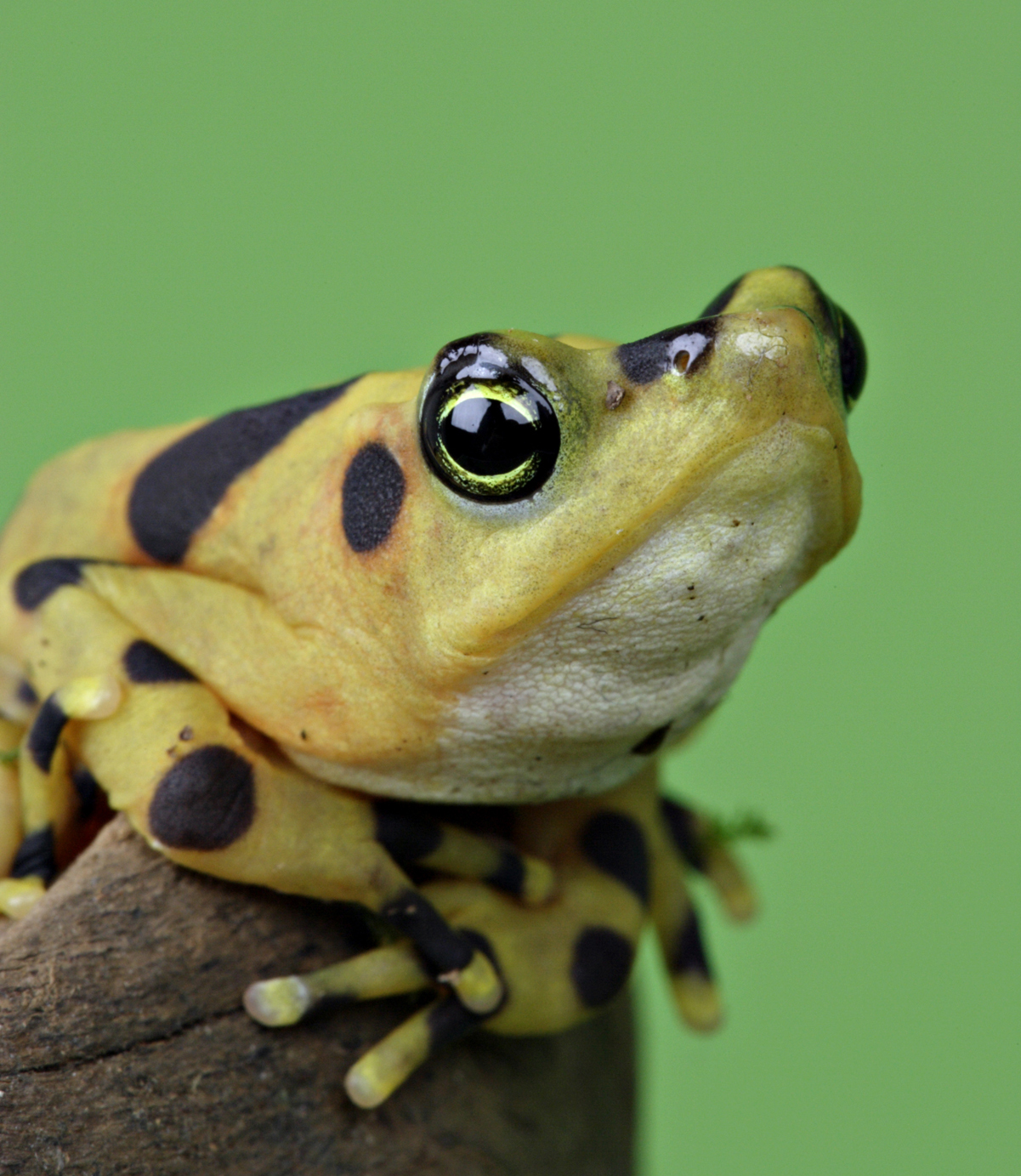Cute Frog of the Week: May 2, 2011
Critically endangered since 2004, the endemic Panamanian golden frog has suffered a population decline of 80 percent over the last 10 years. An angular, dark yellow frog with a trademark swagger, the golden frog is a symbol of Panama’s abundant biodiversity. It is also well-known for its potent skin toxins, which it uses to protect itself against predators. A single frog’s skin contains enough nerve-disabling poison to kill 1,200 mice! Frequently found in and around high mountain forest streams, the golden frog in its golden-yellow, liberally spotted morph (individuals come in various colors and patterns) visually warns potential predators to stay away.
Despite its toxicity, the frog has found itself nearly defenseless against chytridiomycosis, the amphibian disease epidemic that has recently devastated frog populations and biodiversity throughout Central America. Because the range of this frog species is limited, extinction seems all too likely, unless human intervention succeeds in keeping the species around in captivity. Fortunately, an in-situ conservation program in western Panama (the El Valle Amphibian Conservation Center, aptly named EVACC) has led the conservation effort as part of the Panama Amphibian Rescue and Conservation Project.
Frog declines raise a number of fascinating questions. For example, recent studies have shown that Panamanian golden frogs are making a last-ditch attempt to ward off infection by thermally killing the pathogen. Fortunately, researchers believe that the chytrid fungus does not thrive at temperatures 5 C above the frog’s normal body temperature. The frog attempts to increase its body temperature above normal levels by moving within its habitat to warmer places. As an ectotherm (a cold-blooded animal), the frog can only control its internal temperature by these behavioral adjustments to its external environment. Nonetheless, these efforts by wild golden frog populations may by in vain. Chytridiomycosis has so far prevailed, but intense conservation efforts in Panama keep hope alive. Panama’s symbol of amphibian beauty continues to awe humans in safe environments like EVACC. Re-introduction of these individuals and any offspring into the wild will, we are assured, only take place if and when the epidemic has abated.
Photo credit: Mehgan Murphy, Smithsonian’s National Zoo
Every week the Panama Amphibian Rescue and Conservation Project posts a new photo of a cute frog from anywhere in the world with an interesting, fun and unique story to tell. Be sure to check back every Monday for the latest addition.
Send us your own cute frogs by uploading your photos here: http://www.flickr.com/groups/cutefrogoftheweek/

